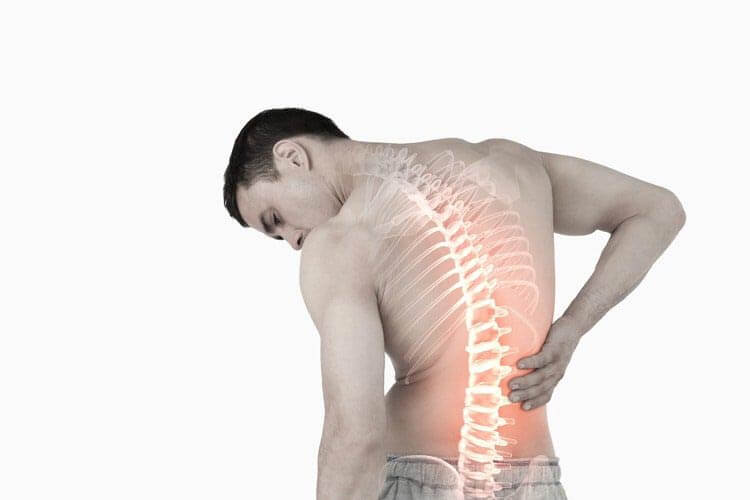IDD Therapy (Brookhaven Location Only)
What is IDD Therapy® treatment?
IDD Therapy® treatment stands for Intervertebral Differential Dynamics Therapy, a non-surgical medical protocol for the effective treatment of painful back syndromes. Developed by a broad spectrum of specialists in the field, the treatment method has evolved into a comprehensive disc therapy approach capable of reducing a herniation with up to 86% success rates.
Extensive clinical studies (not all published) have been conducted to validate IDD Therapy® treatment. Thousands of back pain patients have been successfully treated using this protocol. Prescription drugs are not a mainstay of this treatment, although some IDD Therapy® providers do use pharmacology to manage their back patients’ initial pain syndrome. A significant component of this medical regimen incorporates the use of advanced intervertebral decompression equipment. IDD Therapy® treatment must be performed on an IDD Therapy® factory labeled machine.
How does this therapy work?
Intervertebral Differential Dynamics™ Therapy is a highly precise computer applied regimen which utilizes treatment forces to manipulate and mobilize specific spinal segments. When properly administered, the treatment is able to achieve several objectives. First, unloading compressed spinal segments helps reduce built-up pressure on the affected disc. The nature of the cyclical graduating waveform also creates a spinal pumping effect inducing a vacuum within the disc and oxygen flow essential to disc health. Finally, a secondary modality called oscillation is delivered to the surrounding muscle tissue working to release and re-educate guarded spasmed muscles. All this is performed while you rest comfortably in a soothing glow of light, listening to relaxing music. A heated massage bed feature assures that you will complete your treatment session feeling refreshed.
Is the SPINA System Cleared By The FDA?
Yes. The SPINA System is not only cleared to provide treatment for relief from pain and disability for those patients suffering with low back pain, but it is also cleared to provide treatment for relief from neck pain associated with herniated discs, degenerative disc disease, and posterior facet syndrome. The Spina System™ has received two (2) FDA clearances as a Class II Medical Device: One is for providing decompression to the lower lumbar portion of the back and the other is for providing decompression to the cervical portion of the back.
Who can benefit from using Spina System™ equipment?
The following would be inclusion criteria for the Spina System units: (1) Pain due to herniated and bulging cervical or lumbar discs that is more than four weeks old; (2) Recurrent pain from a failed back surgery that is more than six months old; (3) Persistent pain from degenerated discs not responding to four weeks of therapy; (4) Patients available for four weeks of treatment protocol; and (5) Patient at least 18 years of age.
These indications are ideal candidates for enrollment into the Spina program and have the potential of achieving quality outcomes in the treatment of their back / neck pain: (1) Nerve Compression; (2) Cervical or Lumbar Disorders; (3) Cervical or Lumbar Strains; (4) Sciatic Neuralgia or shooting pain, tingling or numbness in the upper extremities / hands; (5) Herniated Discs; (6) Injury of the Cervical or Lumbar Nerve Root; (7) Degenerative Discs; (8) Spinal Arthritis; (9) Low Back Pain w/ or w/o Sciatica; (10) Degenerative Joint Disease; (11) Myofascitis Syndrome (12) Disuse Atrophy; (13) Cervical or Lumbar Instability; (14) Acute Neck or Low Back Pain; and (15) Post-Surgical Neck or Low Back Pain.
Lastly, the Spina System should be utilized with patients with low back pain, with or without radiculopathy who have failed conventional therapy (physiotherapy and chiropractic) and who are considering surgery. Surgery should only be considered following a reasonable trial of the Spina System IDD Therapy® protocols.
What conditions can be treated with IDD Therapy® treatment?
IDD Therapy® treatment has been extremely effective in treating:
- Bulging Discs
- Chronic Back Pain
- Chronic Neck Pain
- Degenerative Disc Disease
- Failed Back Surgery Syndrome
- Herniated Discs
- Myofascial Pain Syndrome
- Nerve Compression
- Non-Surgical Back Pain Relief
- Piriformis Syndrome
- Posterior Facet Syndrome
- Sciatica
- Spinal Decompression
What Result Can My Patients Expect?
Many patients with neck or lower back syndromes may experience pain relief as early as the third treatment session. Comparison of pre-treatment MRI’s with post-treatment (IDD Therapy® regimen for 4 weeks) MRI’s has shown a 50% reduction in the size and extent of herniation. In clinical studies, 86% of patients reported relief of back pain with the Accu-SPINA™ system. Within the past five years, some private practice clinicians have reported success rates as high as 90%.
Many patients with neck or lower back syndromes may experience pain relief as early as the third treatment session. Comparison of pre-treatment MRI’s with post-treatment (IDD Therapy® regimen for 4 weeks) MRI’s has shown a 50% reduction in the size and extent of herniation. In clinical studies, 86% of patients reported relief of back pain with the Accu-SPINA™ system. Within the past five years, some private practice clinicians have reported success rates as high as 90%.
IDD, which stands for “Intervertebral Differential Dynamics”, is a specialized therapy that provides relief for people with internal disc decompression. Today, many people in Georgia and surrounding areas are turning to IDD therapy in Atlanta in that this particular treatment is completely non-surgical while providing the patient with great relief from a number of painful and debilitating back conditions.
IDD therapy was developed by a broad team of specialists who understood the need for a non-invasive means of providing pain relief. What doctors have found is that patients with a herniated disc who were given IDD therapy, as many as 90% of the cases were completely successful. While IDD therapy in Atlanta and other parts of the country is considered a “new” option, medical professionals and patients alike are hopeful this will quickly become a first line of defense for back pain.
For people who use IDD therapy in Atlanta, they are being provided with an exciting and innovative approach to help with all types of neck and lower back problems. This means that individuals who suffer from a herniated disc, as well as bulging disc, sciatica, posterior facet syndrome, degenerative disc disease, and ongoing back pain can actually experience long needed relief. This allows the person to regain control over his or her life!
For people with a herniated disc, the negative pressure that is being applied helps to retract the disc. In return, the patient begins to experience pain relief. Then, for individuals who have degenerative disc disease, not only is there decompression but water, nutrients, and oxygen are also promoted in the area, which aids in the healing of the discs.
The way in which IDD therapy in Atlanta and other states is conducted is by using a special device called the Spina System. This device helps by decompressing the spine, which in turn helps to stabilize and reduce vertebral structures. The device itself is Food and Drug Administration approved and listed as a Class II medical device.
Unlike former treatment options, IDD therapy from Georgia Spinal Health & Wellness has the ability to concentrate on concise areas of the neck and lumbar spine. This allows the treatment to be absolute so the outcome is substantial. The professional conducting the treatment can distract the space in the intervertebral spine anywhere from five to seven millimeters. The result of this is a dramatic elimination of pressure.
Not only is the IDD therapy in Atlanta precise, it is a gradual procedure so there is no force on the body. By providing the patient with treatment coupled with period of relaxation, there is no pain and muscle spasms are alleviated. The professional conducting the therapy will maintain constant negative pressure so the treatment is 100% effective. In fact, most patients who go through IDD therapy say they feel calm and relaxed during the procedure.
If you have neck or back pain due to any of the listed problems and are tired of living in pain and with limitation, IDD therapy in Atlanta may be the ideal solution. With this treatment, you avoid going through a difficult and painful surgery, one that requires significant recover time. Instead, you would be provided with therapy for 35 days and in no time, be back to a life of normalcy. Contact Georgia Spinal Health & Wellness to schedule an appointment for you or a family member.













